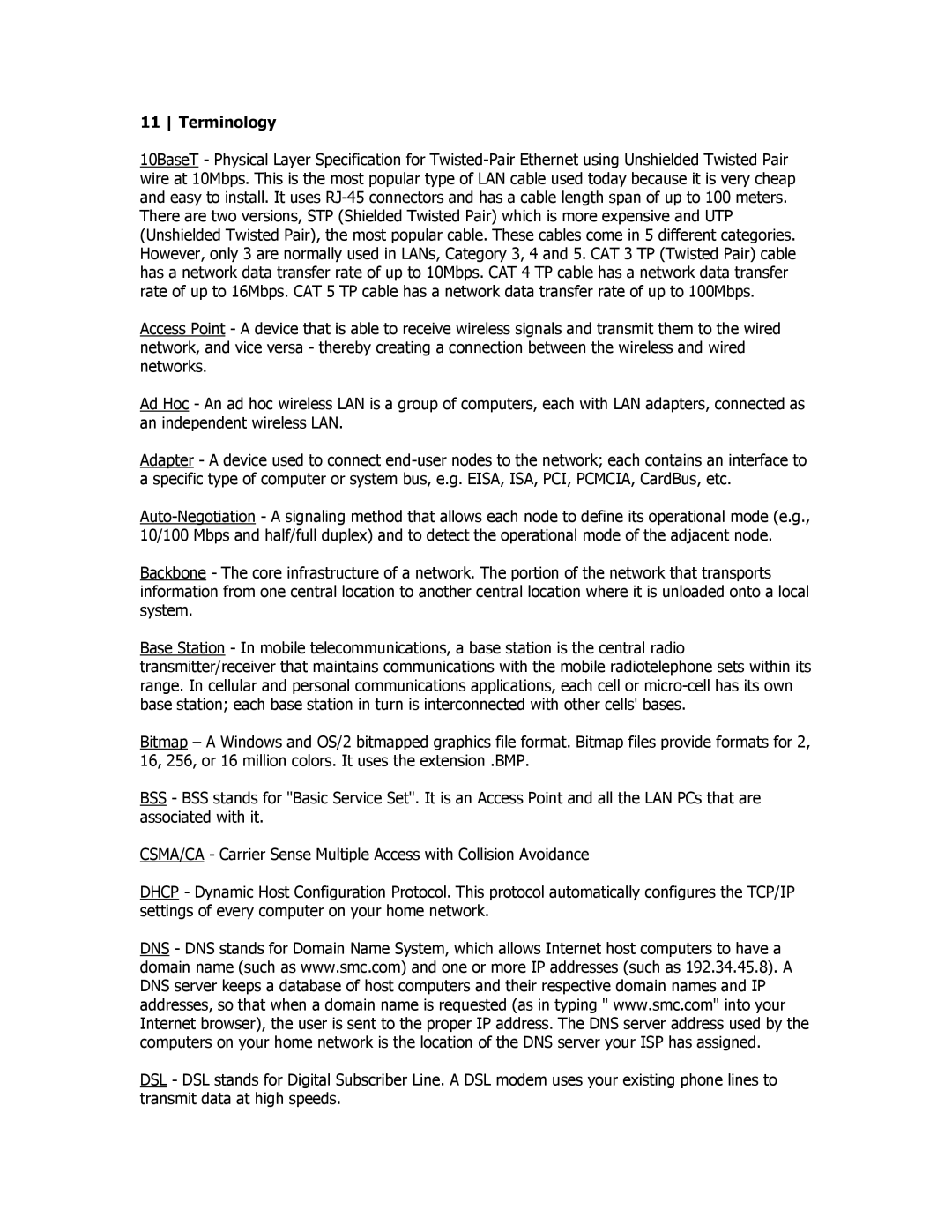11 Terminology
10BaseT - Physical Layer Specification for
Access Point - A device that is able to receive wireless signals and transmit them to the wired network, and vice versa - thereby creating a connection between the wireless and wired networks.
Ad Hoc - An ad hoc wireless LAN is a group of computers, each with LAN adapters, connected as an independent wireless LAN.
Adapter - A device used to connect
Backbone - The core infrastructure of a network. The portion of the network that transports information from one central location to another central location where it is unloaded onto a local system.
Base Station - In mobile telecommunications, a base station is the central radio transmitter/receiver that maintains communications with the mobile radiotelephone sets within its range. In cellular and personal communications applications, each cell or
Bitmap – A Windows and OS/2 bitmapped graphics file format. Bitmap files provide formats for 2, 16, 256, or 16 million colors. It uses the extension .BMP.
BSS - BSS stands for "Basic Service Set". It is an Access Point and all the LAN PCs that are associated with it.
CSMA/CA - Carrier Sense Multiple Access with Collision Avoidance
DHCP - Dynamic Host Configuration Protocol. This protocol automatically configures the TCP/IP settings of every computer on your home network.
DNS - DNS stands for Domain Name System, which allows Internet host computers to have a domain name (such as www.smc.com) and one or more IP addresses (such as 192.34.45.8). A DNS server keeps a database of host computers and their respective domain names and IP addresses, so that when a domain name is requested (as in typing " www.smc.com" into your Internet browser), the user is sent to the proper IP address. The DNS server address used by the computers on your home network is the location of the DNS server your ISP has assigned.
DSL - DSL stands for Digital Subscriber Line. A DSL modem uses your existing phone lines to transmit data at high speeds.
